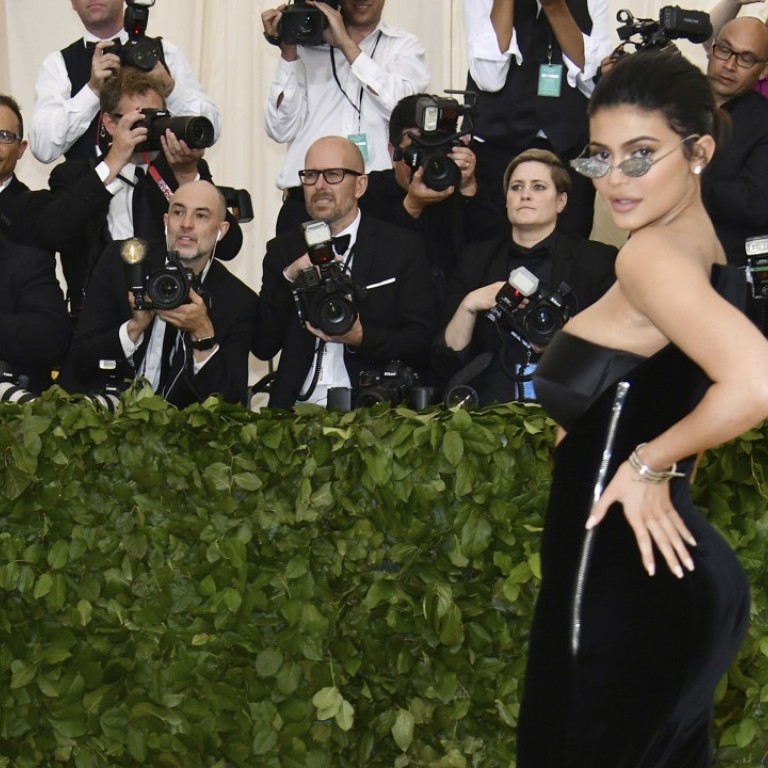How can fashion industry CEOs be more like Kylie Jenner than Stefano Gabbana on Instagram?

Comments allegedly from Stefano Gabbana recently destroyed 33 years of Dolce & Gabbana’s brand equity in 48 hours after private messages attributed to his Instagram account went viral.
On the other end of the spectrum, Kylie Jenner’s make-up company, Kylie Cosmetics, used social media to generate US$420 million in sales during the first 18 months and is projected to make US$1 billion by 2022.
While fashion CEOs already have their own Instagram accounts, most do not have the fancy lifestyle and digital skills of a Jenner or a Kardashian.
But the question is, who is the most capable of managing their own Instagram account?
It should be noted that Dolce & Gabbana said the Instagram accounts of the company and Gabbana himself had been hacked and its legal team was “urgently investigating” when the news broke last month.
In the fashion and luxury industry, the digital revolution broke down the heavy barriers of communication between customers and even the most prestigious brands.
It is quite normal to find CEOs, managing directors and C-suite executives on the social networking website for professional such as LinkedIn.
But today, Instagram is so crucial that fashion CEOs want to be aware of the content calendar, the numbers of likes on their latest post and even have the login and password for the account.
Imagine you are on Instagram, and you send an emoji in reply to the latest story of your favourite fashion brand.
A few minutes later you receive a heart in private message and this digital exchange makes you happy even without knowing exactly who it is coming from.
You think it is probably a young community manager that is replying to most of the followers. Depending of the size of the company, you have probably received this heart – surprisingly – from the CEO.
The number of employees in the digital department varies depending on the size of the fashion brand.
Major fashion houses with anywhere between five to 30 million followers need a team of around 15 to 20 people to handle the global digital strategy.
Mid-size fashion companies might have three to five people, plus an in-market coordination team in each country.
In fashion start-ups, the Instagram account is usually managed by the founder or the communication and marketing intern.
Fashion designers were early adopters of Instagram to showcase their creativity, share their lifestyle, make a statement and network with celebrities.
Psychological research is being released regularly regarding the impact of social media on our psyche and our relationships.
Instagram relies on high-impact visuals that amplify our culture’s growing levels of narcissism. However, narcissism 2.0 is only impacting brand perception.
“Control freak” is the new insidious psychological pattern to be taken into account from the management point-of-view.
CEOs of fashion brands are on Instagram to keep control of the brand, either by using the official account or on their own.
They can perfectly follow the evolution of the brand image, oversee customer satisfaction, observe the popularity of an event and interact with influencers.
As a consequence, with just a smartphone, the most senior leader can control most departments, from communication and marketing to digital and sales.
But there is a fine line that exists between leveraging Instagram to build a following and brand loyalty against the distractions of micromanaging one unhappy customer from across the globe.
In management, Instagram tends to be a double-edged sword.
An issue may arise when a CEO inadvertently reveals “secrets” to their brand strategy, or worse, the operational side of the brand.
With temptation being too great, the manager might reveal too much with disappointing photos, using the wrong hashtags, or have bad timing on the launch of a product.
These minor errors will strongly impact the magic of the brand.
All over Asia, live-streaming – whether events, fashion shows or product launches – has become quite common over the past few years.
Inspired by the power of live streaming, we have a new breed of European CEOs – they are discreet and exist in the shadows.
They are elegant “guests” interviewed in live Instagram stories by the editor-in-chief of a magazine during an event.
Even in the exclusive and conservative watch industry, the charismatic Jean-Claude Biver, chairman of Zenith and Hublot and former-boss of LVMH’s watch division, led the way by sharing his lifestyle and business activities.
Instagram has become an essential part of a daily routine for CEOs, whether they have a public or private account.
In the past, fashion CEOs were usually focused on developing the brand with important business deals behind the closed doors of their fancy offices.
Today, to operate a successful business, CEOs must acquire new skills such as photography, including selfies or filters, managing online communities and building a personal brand.
And in the near future, during a board meeting, fashion CEOs will most likely have to also release the quarterly results linked to the evolution of their Instagram account.
Want more stories like this? Sign up here. Follow STYLE on Facebook, Instagram and Twitter

Dolce & Gabbana angered Chinese consumers last month with their ‘DG Loves China’ video, which led to the likes of Tmall, JD.com, Xiaohongshu and Secco removing products from their sites